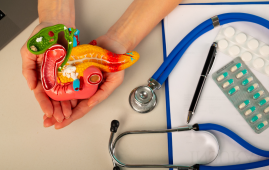

The exercise stress test, often done with an electrocardiogram (ECG), is a common medical test. It is usually used to check for cardiovascular risks, but a recent Mayo Clinic study found it can also predict non-heart-related causes of death, like cancer.
This study’s results are in Mayo Clinic Proceedings.
Although exercise tests are ideally used to check for coronary artery disease and other common cardiovascular risks, a recent Mayo Clinic study showed that abnormal results, like poor aerobic capacity, can also predict deaths that are not related to the heart, such as cancer, along with heart-related deaths.
The exercise stress test is a simple, non-invasive procedure that is widely accessible and offers valuable diagnostic details. Besides the ECG, this test provides information about aerobic capacity, heart rate recovery, and the chronotropic index. This index measures heart rate during exercise and takes into account a person’s age, resting heart rate, and fitness level.
“In our exercise testing cohort, non-cardiovascular deaths were more frequently observed than cardiovascular deaths,” says Thomas Allison, Ph.D., M.P.H., director of Mayo Clinic’s Integrated Stress Testing Center and the study’s senior author.
“Though this was a cardiac stress test, we found that cancer was the leading cause of death, at 38%, whereas only 19% of deaths were cardiovascular. Exercise test results including low exercise capacity, low peak heart rate, and a slow recovery of the heart rate after exercise test were associated with increased mortality.”
The study involved 13,382 patients who were healthy and had no cardiovascular risks or serious health issues. They did exercise tests at Mayo Clinic between 1993 and 2010, and monitored for about 12.7 years.
The results show that doctors should pay attention to more than just the ECG. The focus should also be on if the exercise test shows low aerobic capacity, low chronotropic index, or slow heart rate recovery. According to Dr. Allison, even if the ECG looks fine, patients should be encouraged to exercise more if they have these unusual results.
more recommended stories
 Poor Kidney Function and Alzheimer’s Biomarkers Explained
Poor Kidney Function and Alzheimer’s Biomarkers ExplainedPoor kidney function may influence levels.
 Walking Speed Before Hip Replacement Predicts Recovery
Walking Speed Before Hip Replacement Predicts RecoveryNew Evidence Points to a Simple,.
 Neuroblastoma Drug Combo Extends Survival in Models
Neuroblastoma Drug Combo Extends Survival in ModelsA Promising Shift in High-Risk Neuroblastoma.
 Safer Allogeneic Stem Cell Transplants with Treg Therapy
Safer Allogeneic Stem Cell Transplants with Treg TherapyA new preclinical study from the.
 How Soybean Oil Impacts Weight Gain and Metabolism
How Soybean Oil Impacts Weight Gain and MetabolismWhy Soybean Oil May Affect Metabolism.
 Coffee and Cognitive Function: Evidence Review
Coffee and Cognitive Function: Evidence ReviewA new narrative review in Cureus.
 Colorectal Cancer Screening Rates Low in Adults 45–49
Colorectal Cancer Screening Rates Low in Adults 45–49Recent UCLA research reveals that colorectal.
 Gut Immune Cells and Long-Lasting Antiviral Protection.
Gut Immune Cells and Long-Lasting Antiviral Protection.Breakthrough Findings on How Gut Immune.
 Mild Pancreatic Duct Dilatation Signals Higher Cancer Risk
Mild Pancreatic Duct Dilatation Signals Higher Cancer RiskEarly Structural Changes Offer Critical Clues.
 How the Uterus Senses Force During Labor: New Insights
How the Uterus Senses Force During Labor: New InsightsA new study published in Science.

Leave a Comment